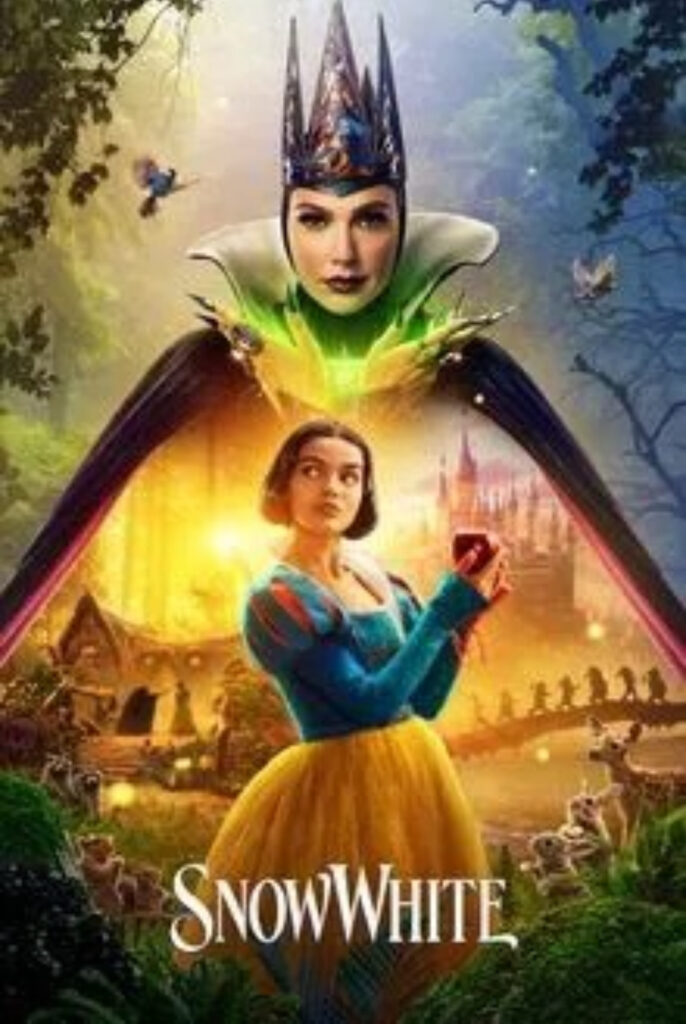Whether by word of mouth or an online search, there is a wide consensus that Disney’s latest live-action remake “Snow White” was a complete theatrical flop. Conversation with movie-goers, be them diehard fans or more casual viewers, reveals one prevailing sentiment: Audiences seem to be growing weary of remakes and sequels. And Disney seems to be a major culprit.
Known for its creative tenacity, Disney now feels more like a factory, churning out films that soar high at the box office, but fall low in audience ratings. “Mufasa the Lion King” made $721 million at the box office but has a 56% on Rotten Tomatoes. “Moana 2” earned 61% with a cool billion box-office bucks. Why these films, as well as others seem to be underperforming is a mix of bland storytelling, forgettable characters and an overall sense that the screenplay was rushed and not carefully crafted. At the 2024 D23 event, which is basically a Disney super fan convention, the company announced its film lineup. Out of the 16 films announced, only three of these movies were not already tied to existing franchises. The other 13 were sequels, remakes and spinoffs.
Right now, it feels like audiences are children at the Disney gumball machine. Bright colors and familiar flavors are enticing, so they stick their quarters in the slot and crank. The purchase starts to spiral downward, but they remain hopeful. When it is time to chew, they find it bland and, frankly, difficult to enjoy. It bears only a shallow resemblance to the flavors they know and love. It gets spat out after a minute. How many colors will they try before they decide to save the 25 cents for laundry instead? How many uninspired sequels and remakes will Disney dispense until audiences turn on them for good?
“Snow White,” this primary-colored gumball, seems to be the largest example of this disappointing trend by far. Since its initial filming began in 2022, onlookers have watched this film’s downward spiral for years. From controversial statements made by the lead, debate over how Disney should portray dwarves, reported tension between co-stars, delays due to Covid and an on-set fire, the amount of fiasco surrounding the movie’s production proves it was doomed from the beginning.
When it finally released on March 21, audiences entered theaters to find that the Snow White they know is dead. She is written in a way that much of what made the original character so beloved has been completely done away with. The original Snow White is caring, thoughtful and a bit naive – important character traits that drove plot decisions. Standing in her place is someone who comes off as self-righteous and entitled. She actually bears a lot of resemblance to Goldilocks, breaking into a home without concern for its inhabitants and sleeping in their beds. Then she bosses them around without earning any of her keep.
Because so much of the original dialogue was cut out, there was not a lot of time for Snow White’s relationships with other characters to develop. Instead, these character connections were supposed to be assumed by the audience because they shared songs. This is seen with the dwarves in “Whistle While you Work” and in the forgettable “A Hand Meets A Hand,” where she and the Robin Hood-esque Jonathan presumably fall in love in the span of four minutes because they had zero chemistry in all their prior shared scenes.
Calling this film a live action remake is a stretch. There was so much changed about the plot that it seemed to be an entirely new story that incorporated familiar characters. I understand the desire to retell the story in a new way, but this remake, like so many of Disney’s remakes, does not actually provide any true innovation. Its attempts to stand out have already been done (and done better) in past live action adaptations. Both “Snow White and the Huntsman” (2012) and Mirror Mirror (2012) feature a more courageous princess that fights for social justice in leading a band of people to overthrow the Evil Queen.
While there are so many other places the film fell flat, that would take up several articles word counts to discuss. What Disney’s “Snow White” represents is the culmination of the larger issue of the studio’s approach to filmmaking. While audience members may initially be drawn to adaptations by the colorful nostalgia of beloved films, they are let down by their lack of creativity and innovation that made the originals so successful. While disappointing, there is something extremely poetic about this failure, being a remake of the very film that brought them their original success.
